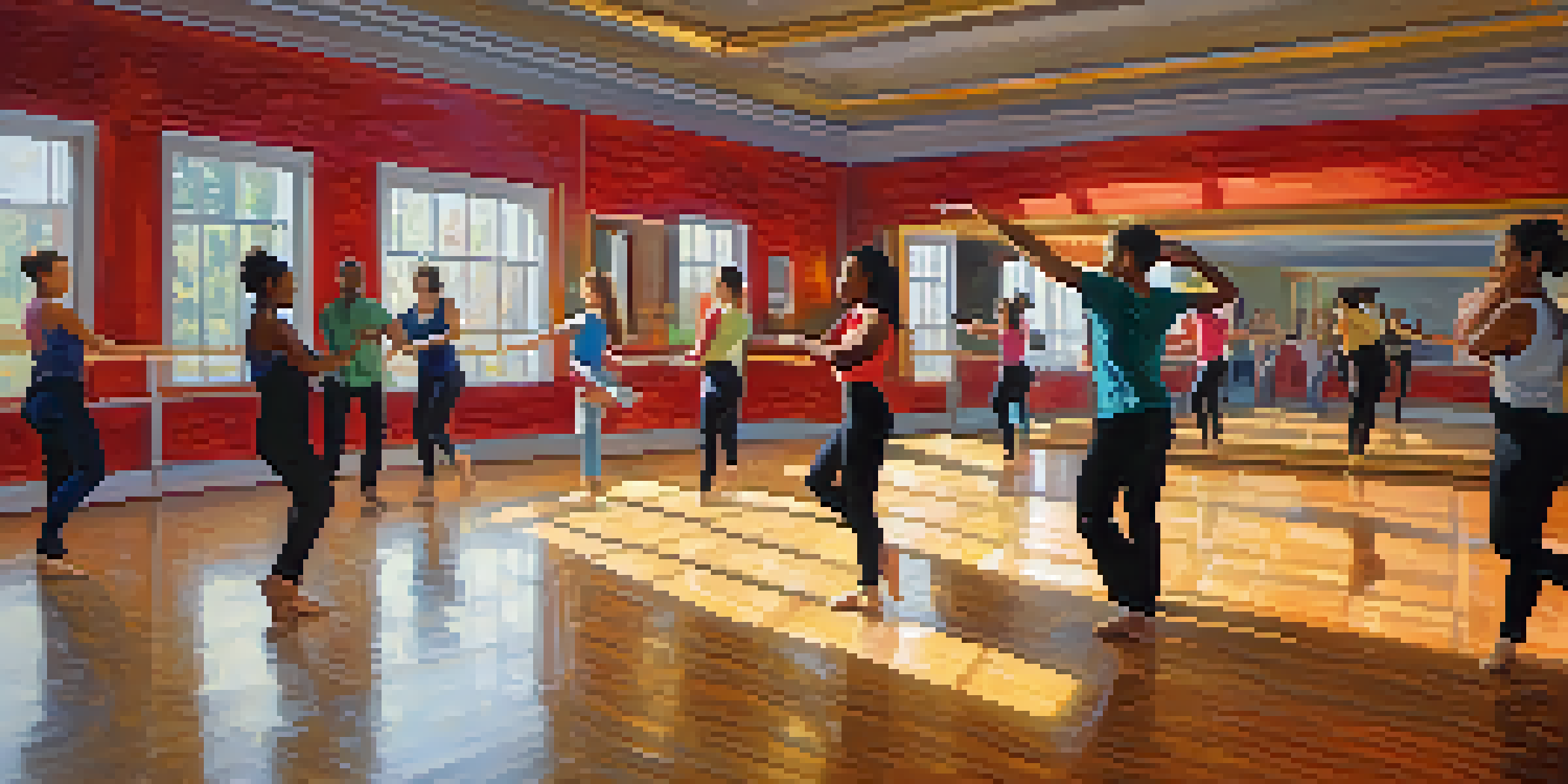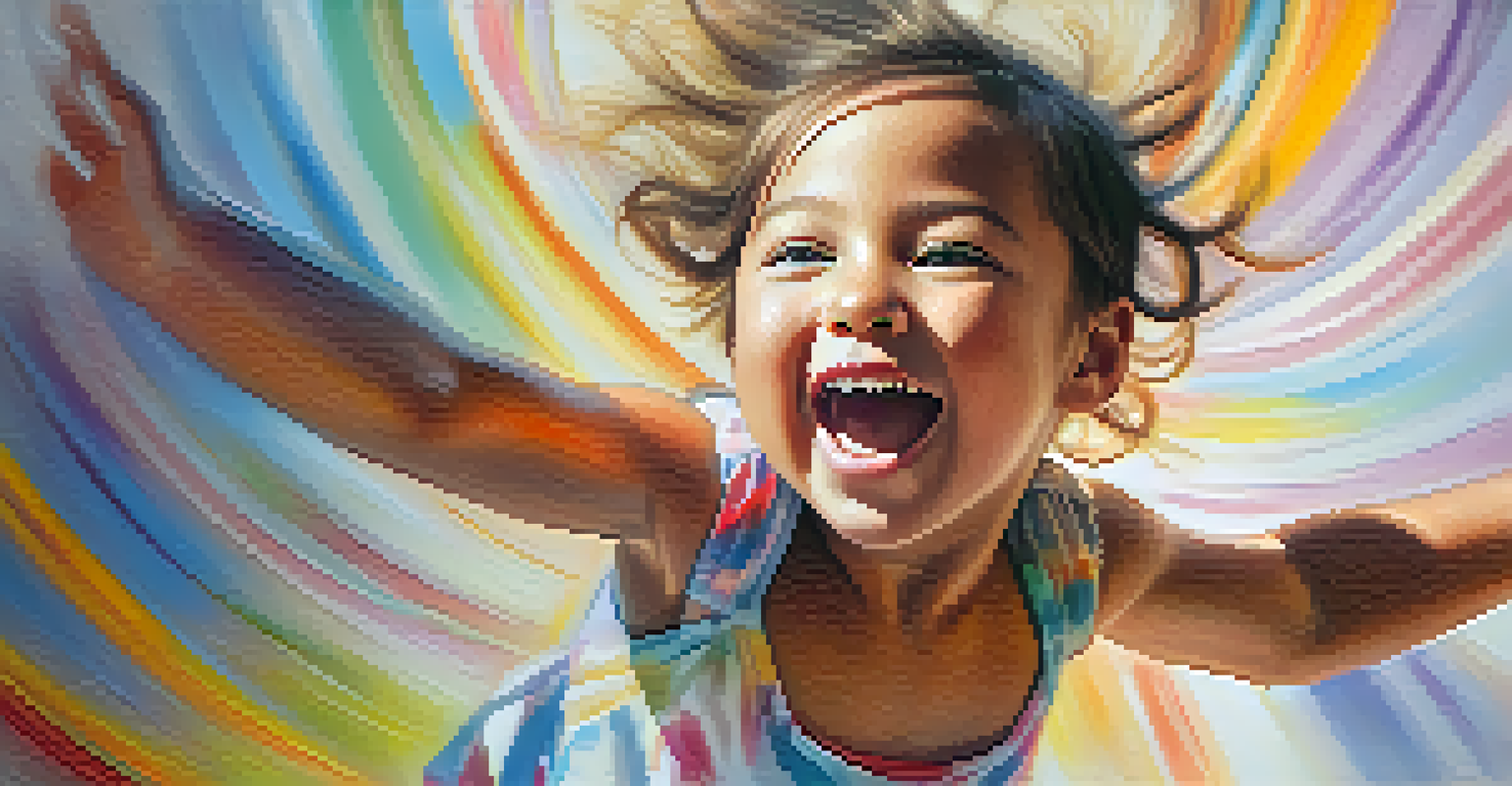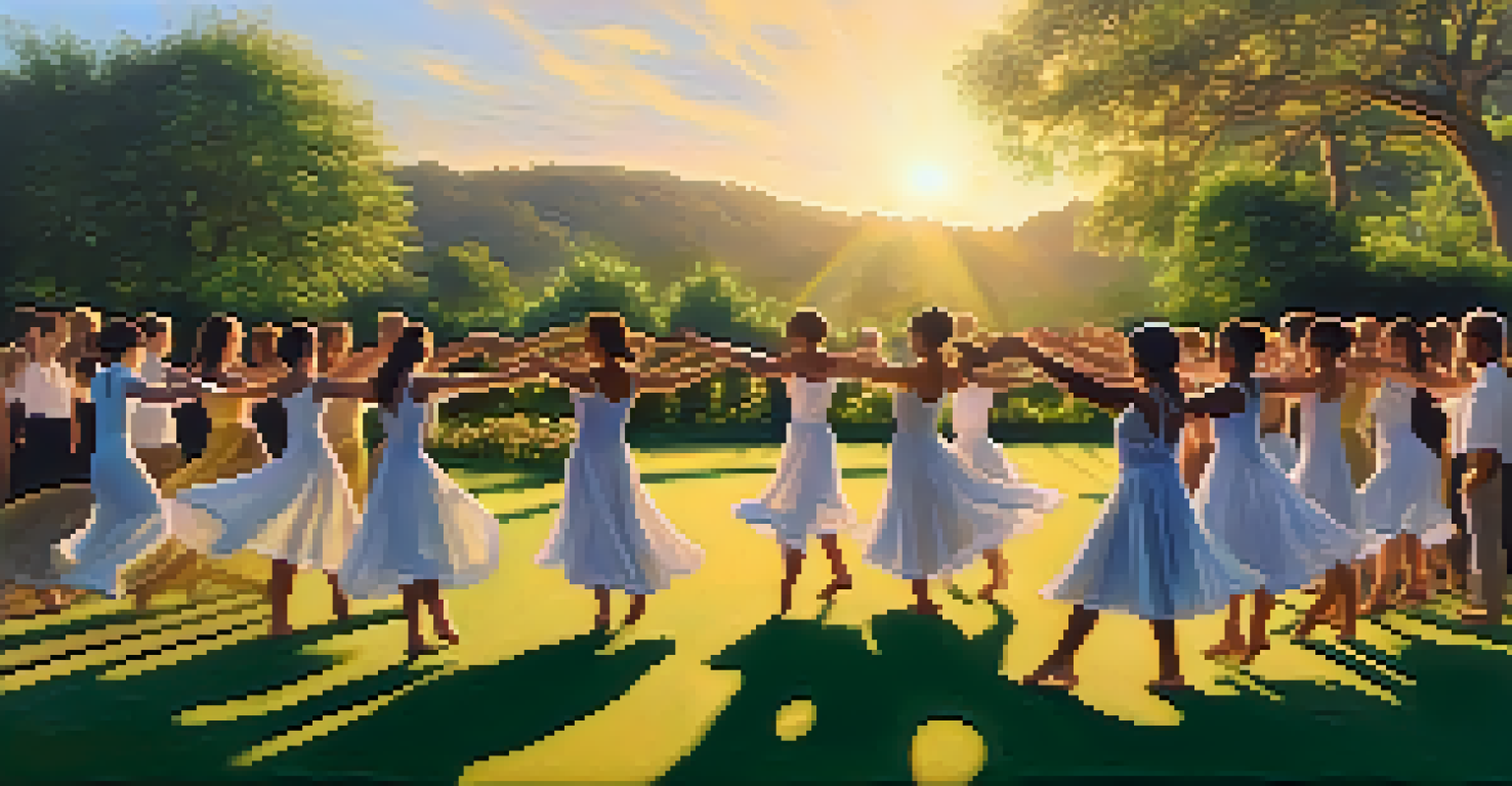Understanding Sensory Experiences in Dance for Neurodiversity

What Are Sensory Experiences in Dance?
Sensory experiences in dance refer to the ways individuals perceive and interpret stimuli through their senses while dancing. These experiences can be visual, auditory, tactile, or even proprioceptive, meaning how we perceive our body's position. For many, dance becomes a rich tapestry of sensations that evoke emotions and memories, creating a unique personal experience.
Dance is the hidden language of the soul.
For neurodiverse individuals, these sensory experiences can be particularly vivid. Some may find certain movements or rhythms comforting, while others might feel overwhelmed by the same stimuli. Understanding this spectrum is essential, as it helps create a more inclusive environment where everyone can express themselves freely through dance.
By recognizing and valuing these sensory experiences, we can foster an environment that encourages creativity and expression. Dance becomes not just a physical activity, but a holistic sensory journey, making it accessible and enjoyable for all, regardless of neurodiversity.
The Role of Movement in Sensory Processing
Movement plays a crucial role in how we process sensory information. When we dance, our bodies engage in various movements that can help us navigate and respond to sensory stimuli. For neurodiverse individuals, certain movements might provide a sense of grounding or help in regulating emotions.

Imagine a child spinning in circles, their laughter echoing as they revel in the sensation. This movement not only brings joy but also helps them make sense of their surroundings. In this way, dance can serve as a powerful tool for processing sensory experiences, allowing individuals to find balance in a world that may sometimes feel overwhelming.
Sensory Experiences Enhance Dance
Sensory experiences in dance, including visual and auditory perceptions, create unique personal connections that enrich the overall experience.
By incorporating movement into sensory experiences, we create opportunities for self-expression and connection. Dance becomes a language of its own, allowing neurodiverse individuals to share their feelings and experiences without the need for words.
Creating Inclusive Dance Environments
Creating inclusive dance environments is essential for supporting neurodiverse individuals. This means considering sensory preferences, such as lighting, music volume, and space. For example, using softer lighting and calming music can help reduce anxiety and create a more welcoming atmosphere.
Movement is a medicine for creating change in a person's physical, emotional, and mental states.
Incorporating flexible routines and allowing for personal expression can also make a significant difference. Some may prefer structured movements, while others may thrive in freeform dance. By providing options, we empower individuals to choose what feels best for them.
Ultimately, an inclusive dance environment celebrates diversity and encourages everyone to participate. By embracing the unique sensory experiences of each dancer, we can cultivate a community where all voices are heard and valued.
The Impact of Music on Sensory Experiences
Music is a vital component of dance and significantly contributes to sensory experiences. The rhythm, melody, and beats can evoke a range of emotions and physical responses. For neurodiverse individuals, certain types of music may resonate more deeply, enhancing their experience and connection to dance.
Consider how a lively tune can energize a dancer, while a slower piece might encourage reflection and calm. These varied musical experiences can help individuals explore their feelings and express themselves creatively. Moreover, understanding personal musical preferences can lead to more tailored dance experiences.
Movement Aids Sensory Processing
Movement plays a vital role in how individuals process sensory information, offering grounding and emotional regulation, especially for neurodiverse dancers.
In essence, music serves as a bridge between the dancer and their sensory world. By selecting music thoughtfully, we can create an enriching atmosphere that resonates with all participants, making the dance experience truly memorable.
Understanding Individual Sensory Preferences
Each individual has unique sensory preferences that shape their dance experiences. Some may be more sensitive to certain sounds or lights, while others may seek out these stimuli for comfort. Understanding these preferences is crucial for tailoring dance experiences that resonate with each dancer's needs.
For instance, a dancer who thrives in quieter environments may struggle in a loud, bustling studio. Conversely, someone who enjoys vibrant visuals may feel invigorated by bright colors and dynamic movements. Recognizing these differences allows instructors and peers to provide appropriate support.
By fostering an awareness of individual sensory preferences, we create more personalized dance experiences. This not only enhances enjoyment but also encourages growth and exploration in a safe environment, where everyone feels valued.
The Therapeutic Benefits of Dance for Neurodiversity
Dance offers therapeutic benefits that can be particularly impactful for neurodiverse individuals. Engaging in dance can provide an outlet for self-expression, helping to reduce anxiety and improve mood. The physical activity involved in dance also releases endorphins, promoting a sense of well-being.
Moreover, dance encourages social interaction and connection, which can be especially beneficial for those who may struggle with traditional forms of communication. By participating in group dance activities, individuals can form bonds and build friendships, enhancing their sense of belonging.
Inclusive Environments Foster Growth
Creating inclusive dance environments that recognize individual sensory preferences promotes self-expression and community among dancers.
Overall, the therapeutic effects of dance extend beyond the physical realm. They encompass emotional and social aspects, making dance a powerful tool for fostering well-being and connection among neurodiverse individuals.
Conclusion: Embracing Diversity Through Dance
Embracing diversity through dance means recognizing and celebrating the unique sensory experiences of each individual. By understanding how dance can serve as a powerful medium for self-expression, we can create inclusive spaces that allow everyone to thrive. This not only enriches the dance community but also empowers neurodiverse individuals to share their stories.
As we continue to explore the intersection of dance and neurodiversity, let’s remain open to the myriad ways individuals connect with their sensory experiences. Whether it's through movement, music, or personal expression, every dancer has something valuable to contribute.

Ultimately, dance is a universal language that transcends barriers. By fostering an inclusive environment, we can ensure that everyone feels welcome to join in the rhythm of life, celebrating our shared humanity.